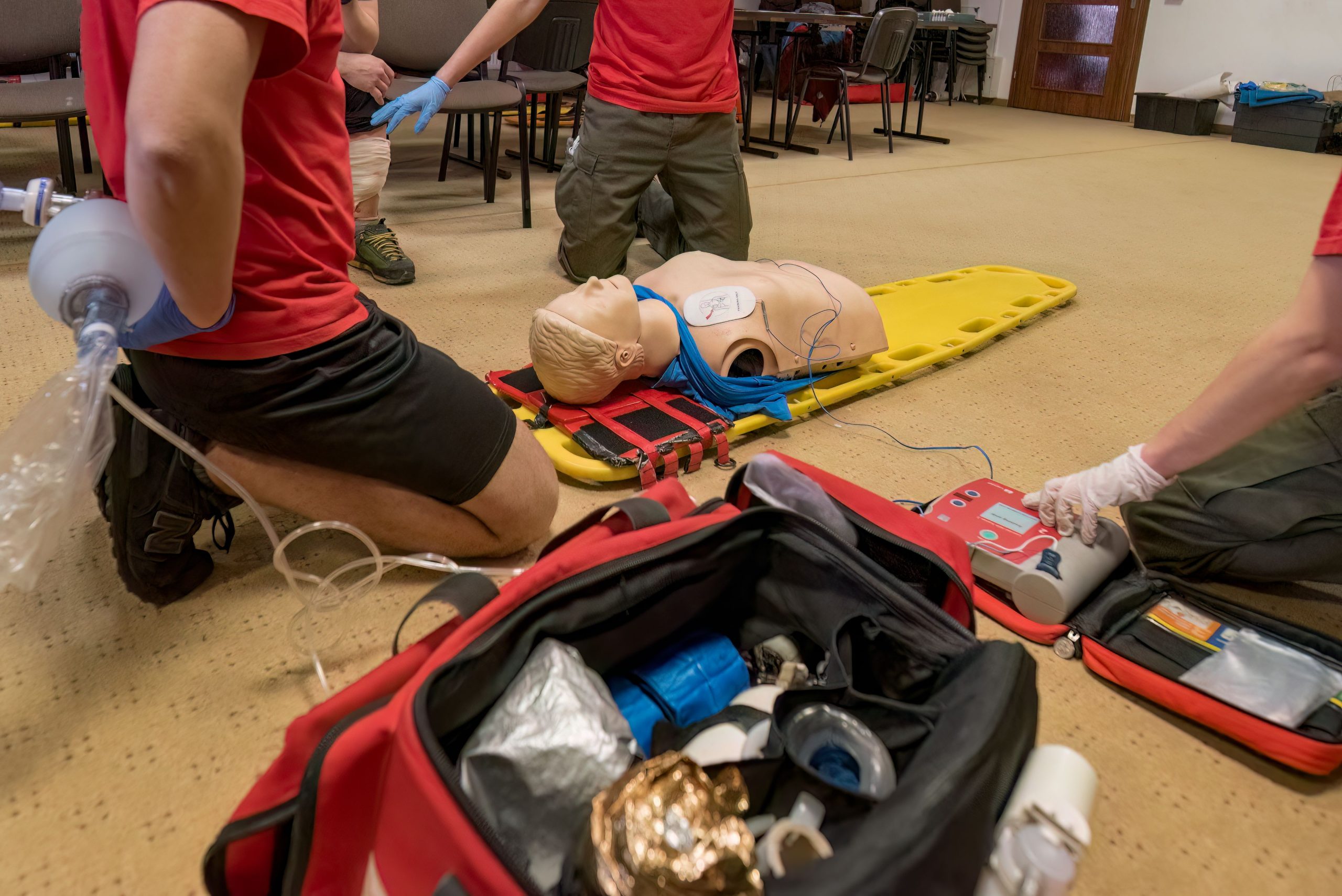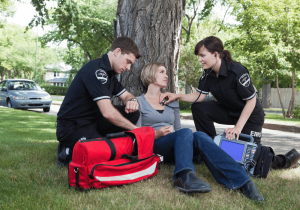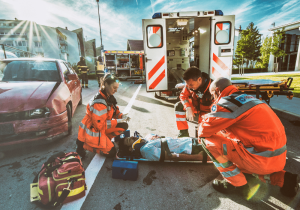
Menu
Close
When emergencies strike, first responders are often the first line of defence. Whether it’s stabilizing an injury, performing life-saving interventions, or managing the chaos of a disaster, their ability to act decisively can mean the difference between life and death. But how do we ensure they are prepared for the real world’s high-stakes scenarios? The answer lies in advanced medical simulation. This blog explores why traditional training methods may not always suffice, how advanced medical simulation is redefining first responder education, and what to look for in a robust medical simulation program.
 The Importance of Effective Training for First Responders
The Importance of Effective Training for First RespondersFirst responders, such as paramedics, firefighters, and police officers, face unpredictable situations daily. From a car crash on a busy highway to a natural disaster affecting hundreds, their actions must be immediate, accurate, and efficient. Unfortunately, mistakes in these high-pressure moments can lead to tragic outcomes.
While classroom-based teaching and on-the-job experience have traditionally formed the backbone of first responder training, they don’t always replicate the intensity, chaos, and physical demands of a real emergency. This is why effective and comprehensive training is vital, and medical simulation is quickly becoming the gold standard for bridging the gap.
First responder training has come a long way over the years, but it still involves notable limitations. Here are some key challenges that traditional approaches often face:
Standard classroom instruction often relies on lectures or basic role-playing, which lacks the lifelike quality required to teach critical decision-making under pressure. Medical emergencies happen fast, and traditional training methods don’t always mimic the adrenaline-fueled dynamics.
Practical training opportunities are frequently constrained by time, resources, and the availability of professionals or facilities. For example, live scenario drills can be costly and difficult to organize, resulting in fewer reps for trainees.
Live training exercises, such as vehicle extractions or chemical spill responses, often involve some level of controlled risk. This can limit how far trainers can go to replicate real emergency conditions safely.
While traditional training focuses heavily on processes and checklists, less emphasis is placed on teaching intuitive critical thinking, split-second decision-making, and inter-team collaboration—all of which are crucial during emergencies.
This is precisely where advanced medical simulation steps in to fill these gaps.
Advanced medical simulation equips first responders with tools, technology, and environments that mimic real-life emergencies to an unprecedented degree. Using cutting-edge technology, including high-fidelity manikins, virtual reality (VR), and augmented reality (AR), simulations provide immersive, hands-on learning experiences.
Medical simulation isn’t new—it’s been a mainstay in medical schools and hospitals for years. However modern advancements, coupled with increased accessibility, have extended its benefits to first responder education.
For example, VR scenarios can replicate the challenges of triaging patients at the scene of a mass casualty event, while high-fidelity simulation manikins can mimic a heart attack or severe trauma with shocking accuracy. Suddenly, trainees can experience what it’s like to perform under pressure in a controlled and safe environment.
The value of medical simulation in training cannot be overstated. Here are just a few reasons why it’s becoming an essential tool for first responders:
 1. Realistic, Hands-On Experience
1. Realistic, Hands-On ExperienceWith advanced medical simulation, trainees can work in environments that realistically recreate the stress and unpredictability of emergencies. Elements like distracting sounds, low visibility, or unpredictable patient conditions can replicate the real-world demands of being first on the scene.
Human error is a natural part of any learning process, but in emergencies, mistakes can have deadly outcomes. Medical simulation ensures trainees can learn from their errors without putting lives at risk.
For example, a paramedic in training can practice intubating a high-fidelity manikin with advanced feedback systems instead of waiting until they face a real patient situation for the first time.
Time is critical in emergencies, and simulations allow first responders to hone skills like CPR, trauma care, or hemorrhage control, ensuring mastery of these procedures within the tightest timeframes.
Teamwork can mean life or death in first response scenarios. Many simulation programs include team-based activities designed to strengthen communication, coordination, and role allocation during chaotic scenes.
Advanced simulation programs often include post-scenario debriefing, where trainees receive detailed feedback. This can include analytics on vital actions, decision timelines, and missed opportunities, enabling continuous improvement.
Not all medical simulation programs are created equal. Here are the essential features you should consider when selecting one for your team or institution:
Look for programs that use advanced manikins with realistic physiological responses. The ability to mimic symptoms (such as laboured breathing or shock) elevates the quality of training significantly.
Programs that incorporate VR and AR offer unmatched immersive experiences. These technologies can transport trainees into realistic, complex situations where decision-making skills are put to the test.
Ensure scenarios are customizable to suit the specific challenges your team may face. For example, urban first responders might benefit from scenarios centered around traffic incidents, while rural teams may require scenarios related to outdoor rescues.
Advanced medical simulation systems that offer real-time feedback or performance metrics are incredibly valuable for tracking trainee progress and identifying areas of improvement.
Choose a program that is user-friendly and can be incorporated into existing training environments without excessive technical demands or costs.
The need for advanced, effective training for first responders is more urgent than ever. Emergencies are unpredictable, and traditional methods can only prepare teams so far. Advanced medical simulation not only bridges the gap but sets a new standard in first responder education by emphasizing realism, safety, and adaptability. First responders aren’t merely practicing life-saving techniques—they’re preparing for unpredictable, high-stakes realities. With simulation, they can confidently face whatever challenges tomorrow brings.
Whether you’re managing a first responder team, a medical professional seeking cutting-edge education, or an organization looking for impactful training programs, now is the time to invest in advanced medical simulation technology. Empower your team to act with precision and confidence when it matters most.